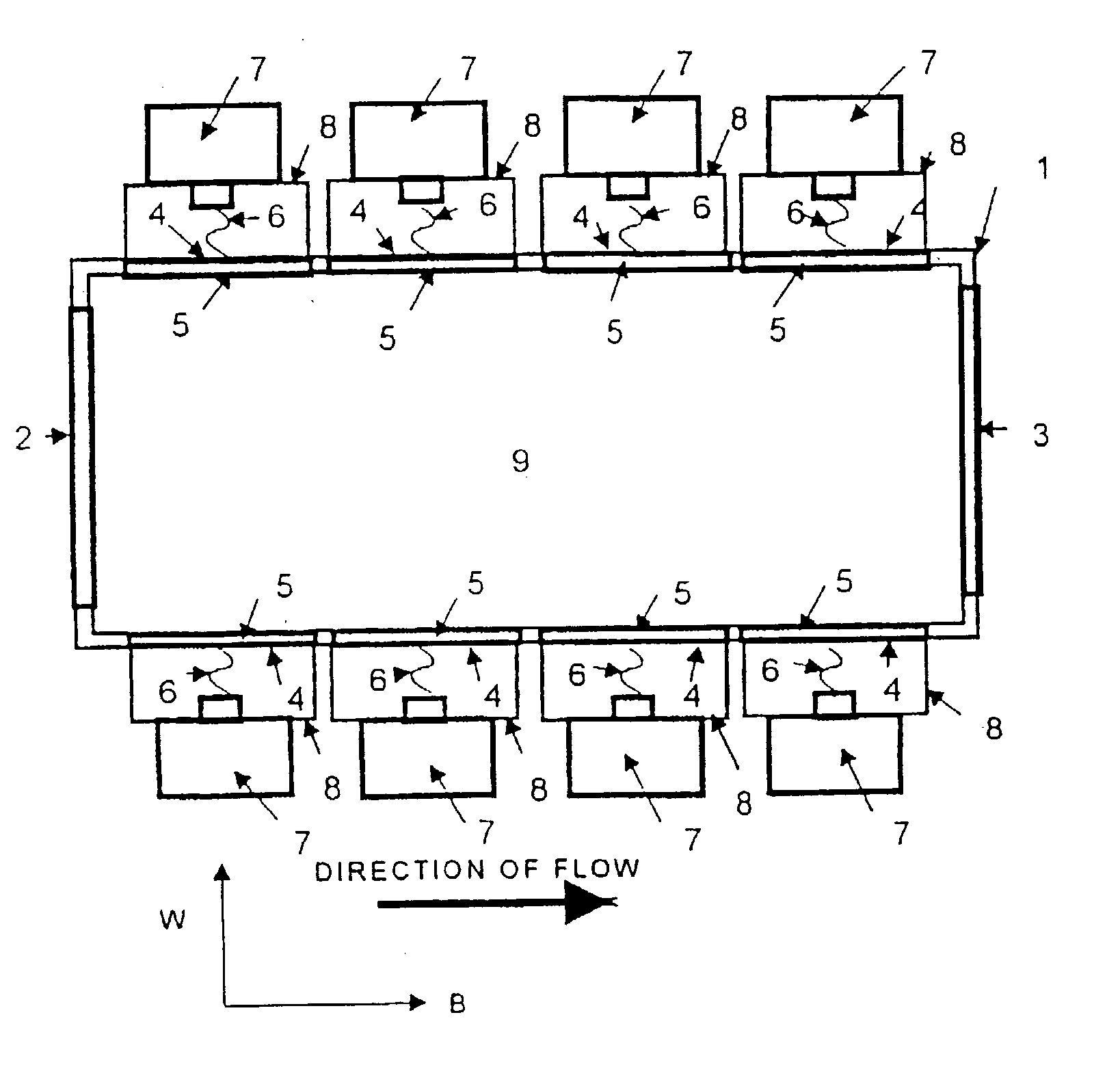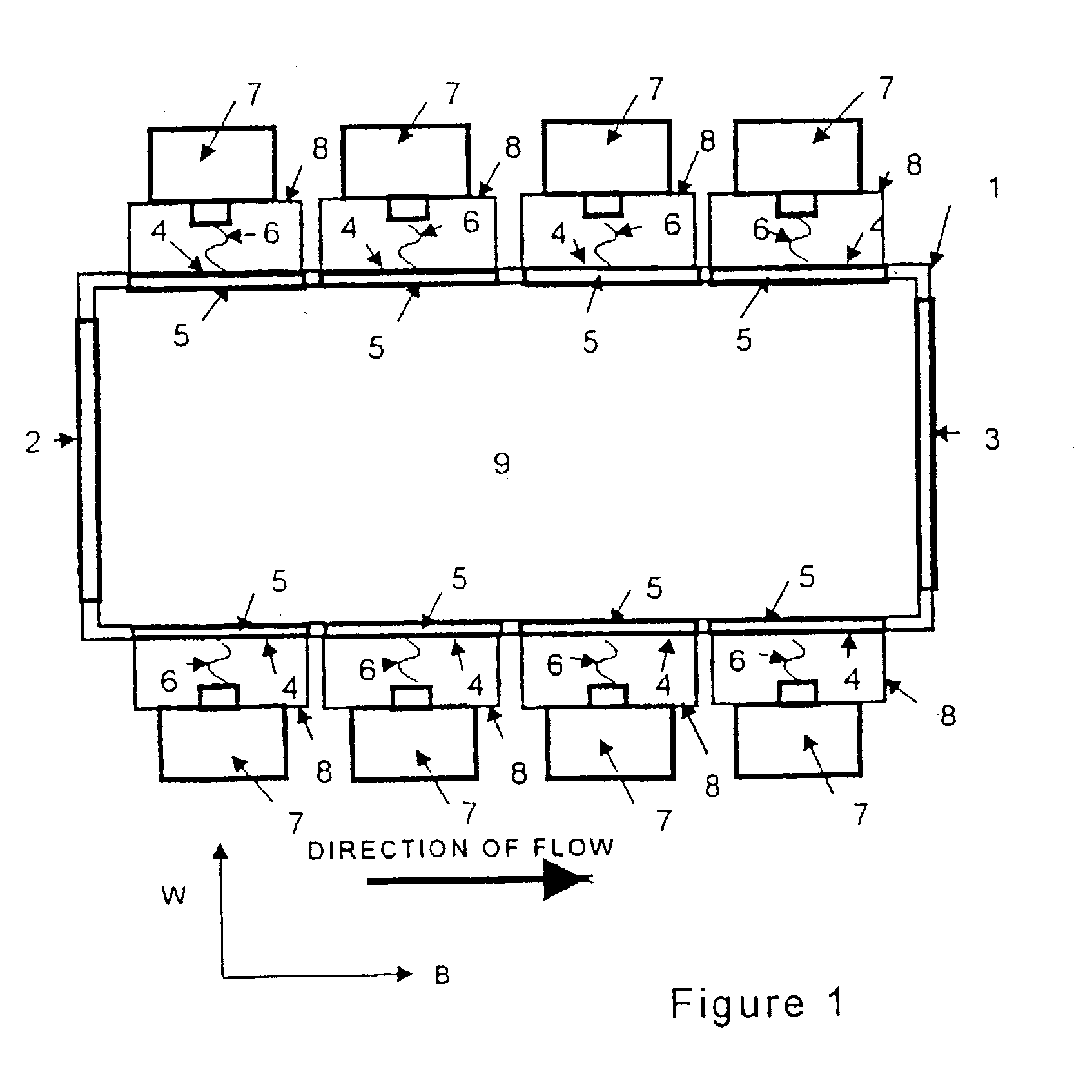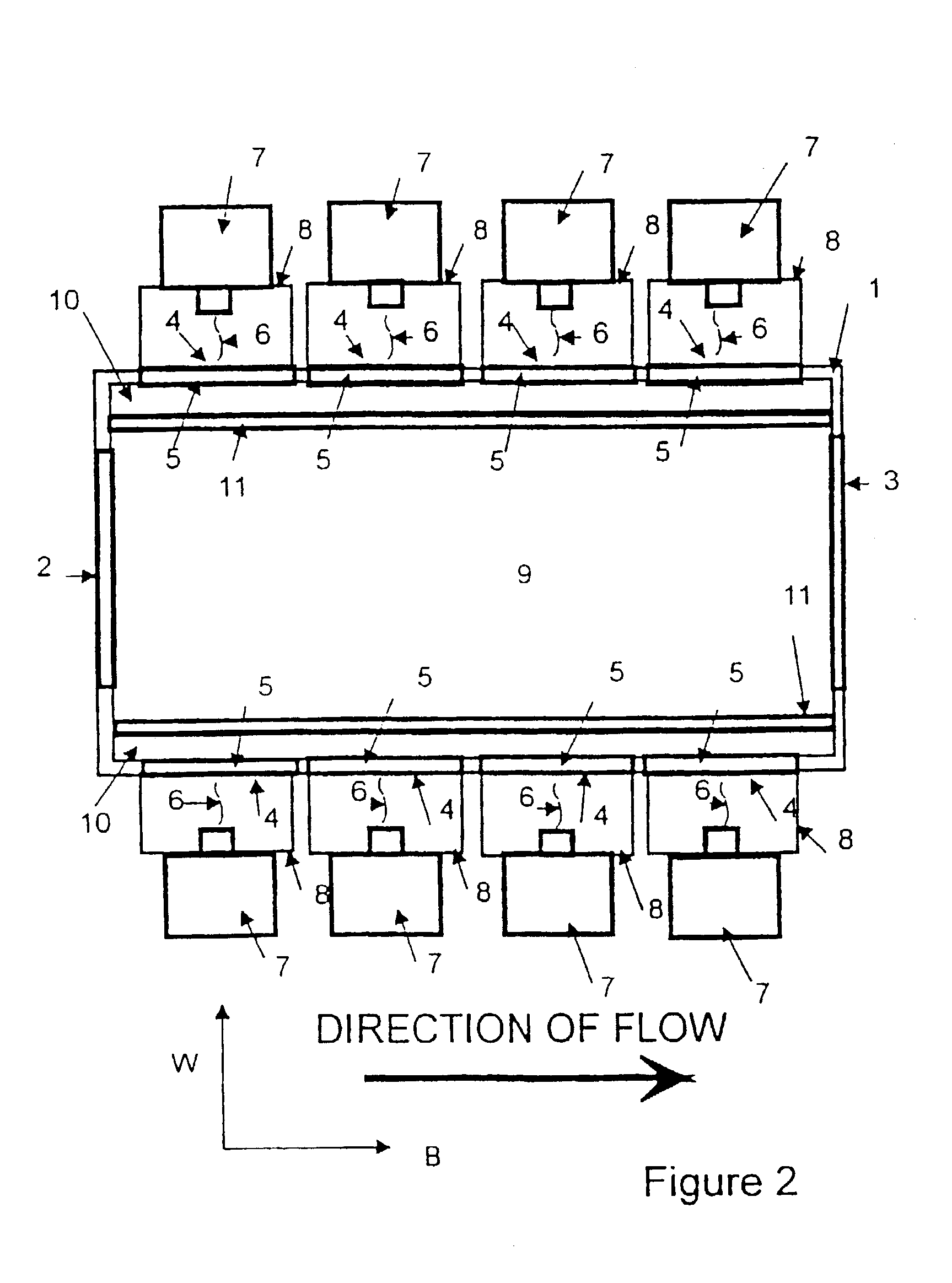Electromagnetic susceptors with coatings for artificial dielectric systems and devices
a technology of electromagnetic energy and susceptor, applied in the direction of electric/magnetic/electromagnetic heating, separation process, physical/chemical process catalyst, etc., can solve the problems of limited above-effects and the inability of the susceptor's structure to allow the applied energy to penetrate into the entire volume, and achieve the effect of promoting chemical reaction
- Summary
- Abstract
- Description
- Claims
- Application Information
AI Technical Summary
Benefits of technology
Problems solved by technology
Method used
Image
Examples
example two
[0026] If interaction of electromagnetic energy with the gaseous species is the primary method for treatment of the gases for chemical reaction or destruction of the pollutants, then to produce volumetric interaction of electromagnetic energy with the gaseous species the applied energy must penetrate the width of interaction inside the cavity at the operating temperature. Therefore, the electromagnetic energy must be able to penetrate the susceptor, and the depth of penetration of the susceptor at the operating temperature must allow for the applied electromagnetic energy to volumetrically interact with the gaseous or particulate species for treatment in the width of interaction. In this method a susceptor may be used to produce turbulence so the gases can mix for better conversion of reactant species to product species.
[0027] For volumetric interaction of electromagnetic energy with the gaseous species, where the shape of the cavity for this device is an irregular-shaped polygon an...
example three
[0031] In example three, the transmission of, absorption of, reflectivity of and scattering of each wavelength of energy that is present in the susceptor becomes important. Instead of the susceptor being constructed of a material, the susceptor may better be constructed of more than one material, which will allow for the wavelength or wavelengths of the applied electromagnetic energy or energies to penetrate and volumetrically interact with the susceptor. And the construction and design of the susceptor and the susceptor's materials of construction will have to be chosen to prevent the design of the susceptor's structure from shielding the wavelength or wavelengths of the applied electromagnetic energy and energies. And also, transmission, absorption, reflectivity and scattering properties of the susceptor will be effected by the bulk density of the materials of construction, as well as the porosity size, pore structure and amount porosity in the materials of construction.
[0032] Thi...
second embodiment
[0289] the method of producing ozone from interaction on an electromagnetic susceptor, comprises the steps of:
[0290] a. providing an electromagnetic susceptor having a matrix material that is nonreflective of electromagnetic energy and that surrounds a non-matrix material that is reflective of electromagnetic energy and that is made from a material that is different from the matrix material, wherein the non-matrix material has exposed surfaces;
[0291] b. controlling the distance between the exposed surfaces of the non-matrix material;
[0292] c. using a matrix material that has a low dielectric losses and low dielectric constant; and
[0293] d. applying electromagnetic energy to the electromagnetic susceptor to produce ozone.
PUM
| Property | Measurement | Unit |
|---|---|---|
| weight fraction | aaaaa | aaaaa |
| weight fraction | aaaaa | aaaaa |
| weight fraction | aaaaa | aaaaa |
Abstract
Description
Claims
Application Information
 Login to View More
Login to View More - R&D
- Intellectual Property
- Life Sciences
- Materials
- Tech Scout
- Unparalleled Data Quality
- Higher Quality Content
- 60% Fewer Hallucinations
Browse by: Latest US Patents, China's latest patents, Technical Efficacy Thesaurus, Application Domain, Technology Topic, Popular Technical Reports.
© 2025 PatSnap. All rights reserved.Legal|Privacy policy|Modern Slavery Act Transparency Statement|Sitemap|About US| Contact US: help@patsnap.com



